
In March, a national emergency was declared for the novel Coronavirus and the Defense Production Act invoked to ensure that ventilators and PPE are distributed to healthcare workers in response to the pandemic.
This act empowers the Federal Emergency Management Agency or FEMA, to work from the top of the supply chain and directly with manufacturers of PPE, such as 3M and Dupont, to prioritize supplies of N95 respirators, protective clothing, and other PPE for medical staff, ensuring that they receive the supplies necessary to address the pandemic.
Before the pandemic, 10 percent of N95 respirators from 3M went to healthcare; that number is now 90 percent.
This has led to significant backorders of PPE supplies for distributors. Carl Atwell, president of Gempler’s, explains that normal lead times for PPE before the crisis was up to 10 days. Now, current reports from suppliers shift daily as manufacturers work to address the executive order.
Estimated times for the availability of disposable respirators suggest fall of this year; and the estimated wait for other PPE supplies is August.
Suppliers are working to significantly ramp up production of PPE: The company 3M announced plans to produce 50 million units of respirators in the U.S. by June for domestic distribution, compared to the 13 million manufactured in the U.S. before the crisis.
“There is a tremendous need, but when you put that much supply chain resources behind it, you intuitively believe that we should catch up at some point,” Atwell says. He encourages agricultural producers to find ways to communicate with each other and distribute PPE as one way to mitigate the shortage. Atwell also suggests looking for lesser known brands of PPE: “Don’t just go to your first tier of choice.”
On their company website, disposable protective clothing is available from brands like Keystone rather than the more recognizable Tyvek® coverall from Dupont, including reusable chemical-resistant clothing as opposed to their disposable counterpart. Supplies in high demand include reusable and disposable nitrile gloves, protective clothing, and disposable respirators, including certain protective eyewear, such as goggles and face shields. Although this could change in the days ahead, half-mask and full-mask respirators are more available than disposable N95 respirators for now.
Since there are many of us in agriculture that will be applying pesticides soon or in the near future, here are some common questions and answers on how to meet PPE requirements as the shortage continues.
Q. I heard that the CDC is loosening regulations on PPE requirements for healthcare workers. Is this the case for agriculture?
Answer:
No. The label is the law. PPE requirements on pesticide labels are written by the U.S. EPA, while state PPE regulations are overseen by the California Department of Pesticide Regulation; neither of these agencies have loosened their regulations for PPE.
Q. Should I stock up on PPE?
Answer:
No. Purchase the PPE that you anticipate needing for the growing season to avoid overstocking and shorting available supplies. Choose reusable PPE whenever possible.
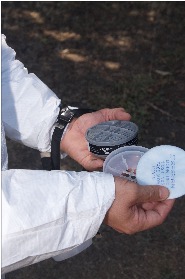
Q. What if I can’t find the respirator that is required on the pesticide label?
Answer:
Option 1: Seek alternative, more protective respirators:
- Applicators may not know how to decide which is the appropriate respirator to choose if the one the label requires them to wear is not available. For example, if the label requires a particulate respirator, such as an N95, wearing a half mask respirator with organic vapor filtering cartridges will not protect you from particulates. However, wearing an organic vapor filtering cartridge with N95 pre-filters will.
- With an increase in PPE, the risk for heat illness increases.
- If an employee or applicator is wearing a different respirator than normal, they will need to repeat their medical evaluation, annual fit test and annual respirator safety training to correspond with the new respirator.
Option 2: Seek alternative pesticide products that do not require a respirator:
Currently, there is no central list of pesticide products that require respirators, so a grower, applicator, or pest control advisor will need to consult all potential pesticide product labels for respirator requirements. Consider visiting www.agrian.com to review PPE requirements quickly under the “safety” tab of a product.
Q. What if I can’t find the right chemical resistant gloves that are 14 mils thick?
Answer :
Nitrile gloves are in high demand. Handlers must always wear gloves made of the material listed on the label but consider searching for reusable chemical resistant gloves made of other materials that still comply with the requirements of the label. Some common chemical resistant materials for gloves are barrier laminate, butyl rubber, nitrile rubber, neoprene rubber, natural rubber, polyethelyene, polyvinylchloride (PVC), and viton rubber. With the exception of barrier laminate and polyethylene, chemical resistant gloves are required to be at least 14 mils thick.
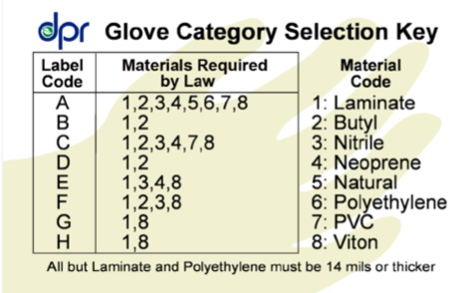
Disposable gloves made out of chemical resistant materials listed on the label less than 14 mils thick can be worn, but for no more than 15 minutes at a time and then disposed of. This may be an option for mixers or handlers who are conducting tasks that require more dexterity. Consider that removing and replacing disposable gloves every 15 minutes is likely a requirement that is not feasible to comply with. Also, thinner gloves cannot be layered on top of one another to add up to 15 mil.
15 mil disposable nitrile gloves are manufactured by suppliers such as, Showa and Cordova Safety among others. If available, they can be worn for the duration of the handling task, so long as they remain intact.
Reusable 15 or 22 mil nitrile gloves are compliant with the majority of handling tasks.
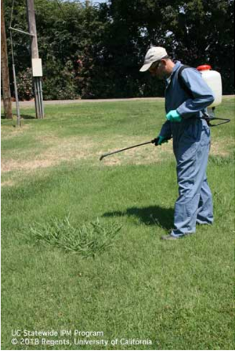
Q. How do I know when to wear a coverall and which ones will protect me?
Answer:
Coveralls must be worn if the pesticide label specifies they are required in the PPE section, or if handling a pesticide with a DANGER or WARNING signal word. For applications where contact with spray residue is likely, such as a backpack or air blast application, coveralls should be added. They can be made of any closely woven fabric, most commonly Tyvek® or a tightly woven cotton.
Coveralls must be provided by the employer and if a reusable cotton coverall is chosen, the employer is responsible for laundering them. A chemical resistant suit worn over work clothing is an appropriate substitute for coveralls, but there is an increase in the risk of heat illness when worn because they are made of a heavier material than most coveralls.
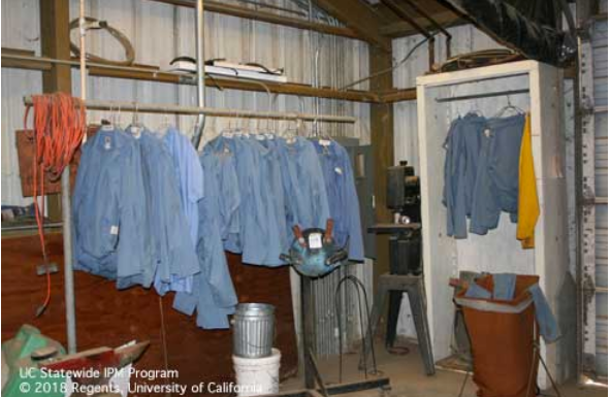
Q: What if I can’t find a face shield?
Answer:
Face shields protect against splashing during mixing and loading and must be worn if specified by the pesticide label. The only substitute for wearing a face shield is using a full-face respirator.
If the label does not specify that eyewear is required, or if it requires “protective eyewear,” you can choose to wear either a face shield, goggles, or safety glasses that provide front, side, and brow protection and meets the American National Standards Institute (ANSI) Z87.1 standard for impact resistance.
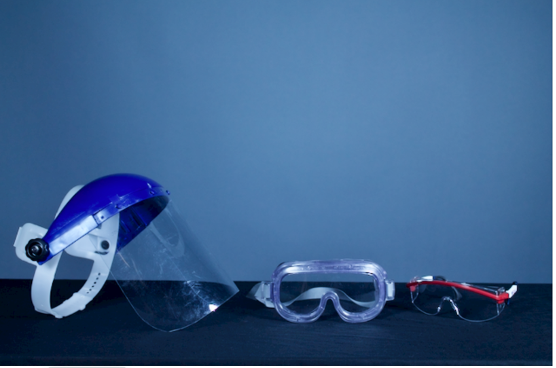
If questions or concerns arise, contact your county agricultural commissioner for more information and assistance during this time.
Carl Atwell from Gempler’s is willing to be a personal resource at this time for those wanting to discuss supplies of PPE and with other related questions. He can be reached at: carl@gemplers.com.
Alec Garcia from Woodland Farm Supply in California is available to help with requests for supplies of N95s or other masks that comply with regulations that come available. You can reach out to her directly and she can provide you with updated information regarding restocking at agarcia@growwest.com.










